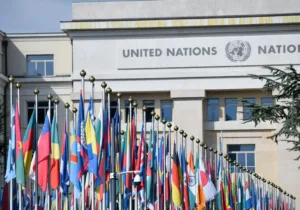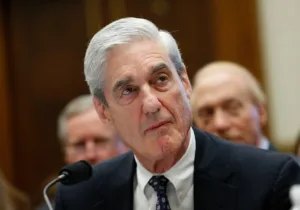In just a few months, Japan and the United States will mark the sixty-eighth anniversary of the security treaty that has become one of the most consequential agreements ever signed by both nations. This anniversary will be celebrated against the backdrop of tremendous geopolitical changes in East Asia that have dramatically altered Japan’s security environment and have compelled Tokyo to reevaluate its standing in global affairs.
Washington’s Japan observers have long ceased viewing Tokyo as a free-riding economic powerhouse simply benefiting from the American security umbrella. And even though Washington and Tokyo have had their differences in the past, the alliance remains fundamentally resilient and will continue to remain so in the foreseeable future as both nations prepare for China’s bid for regional dominance.
Ever since Prime Minister Yoshida Shigeru, accompanied by John Foster Dulles and Secretary of State Dean Acheson, signed the Mutual Security Treaty in 1951, the US-Japan alliance has been the cornerstone of regional stability enabling Washington’s forward-deployed presence and deterrence strategy.
America’s nation-building in Japan was not purely a stringent geopolitical endeavor as the reconstruction began with a zeal to ignite a spiritual awakening among the Japanese. The horrors of the war set the foundations of a massive American socio-political intervention in post-war Japan. As historian Kenneth Pyle explains, General Douglas McArthur was deeply convinced that Christian missionaries would be crucial in accelerating the nation’s rehabilitation as well as embedding democratic values in newly constructed Japan. Furthermore, McArthur was so adamant in this belief that, according to Pyle, missionaries “were the first professional group admitted to occupied Japan, more than a year and a half before businessmen were permitted entry.”
The alliance has been put to test many times. One needs to recall President Richard Nixon’s opening of China, which was done without any consultations with the Japanese government. As one Japanese diplomat noted, “No American action left a more profound impact on Japanese foreign policy in the postwar period than the unilateral decision by President Nixon to go to Beijing to seek rapprochement. The impact went far beyond the immediate reaction of sourness… it changed the meaning of the US-Japan Security Treaty and forthwith the alliance itself.” Then the periodic protests throughout Japan demanding the withdrawal of American troops promised to undo the long-standing alliance. Anti-American sentiments often had a violent ending with incidents such as the stabbing of US Ambassador Edwin Reischauer in 1964.
A painful experience for US-Japan relations was the immediate aftermath of the Cold War. The US-led coalition during the First Gulf War anticipated a Japanese military deployment given the country’s heavy dependence on Middle East oil. Tokyo refused, citing Article 9 of its pacifist constitution drafted by the Americans. To push back against the international blowback, the Japanese offered a financial contribution which invited another round of fierce criticism.
This arguably set the stage for right-wing Liberal Democratic Party (LDP) politicians to garner popular support. As such, Japan’s foreign policy has become increasingly activist with nationalist leaders including current Prime Minister Shinzo Abe seeking to get rid of the restrictions embedded in Article 9. As of 2015, the Self-Defense Forces of Japan can be deployed overseas for military operations.
The ongoing trade war between China and the United States is just the beginning of a long-term conflict that will determine the geopolitical contours of the twenty-first century. This means that the strategic alliance with Tokyo has already become the most important bilateral relationship for Washington. In fact, the United States’ Indo-Pacific Strategy of 2019 rightly acknowledges Japan as an “essential component of our [American] posture in the region.” Moreover, the report states that “the Government of Japan contributes financially to the stationing of US forces in Japan through a Special Measures Agreement. This strategic contribution directly supports the operational readiness of US forces in Japan.” Indeed, Japan has been covering 75 percent of the basing costs.
In pure geopolitical terms, Japan serves as the great enabler of American power projection in Asia-Pacific. Without US-Japan strategic nexus, the so-called first island chain involving Japan, South Korea, and Diego Garcia would be exposed to Chinese military power, therefore compromising the security of South Korea, Taiwan, and eventually Guam, the sovereign territory of the United States. Home to the only forward-deployed aircraft carrier strike group (USS Ronald Reagan, CVN-76), Yokosuka, Japan, remains the sole location that can handle complex carrier operations, including essential maintenance projects. No other regional ally has the capacity or the willingness to host a carrier permanently. Guam similarly lacks the infrastructure for carrier maintenance. In short, the American installations in Japan make the US a resident power and help defy the tyranny of distance.
Japan too is very much dependent on American defense, and Shinzo Abe has saved no efforts to build a personal relationship with President Donald Trump, whose haphazard actions often cause panic in Japan. Think of Trump’s decision to pull the US out of the Trans-Pacific Partnership (TPP). For Abe, TPP offered a great opportunity to implement some of his economic policies, including further liberalizing the Japanese economy and encouraging competition in the agriculture sector. At a great political cost, such as negating the concerns of his supporters in the agriculture industry, Abe made Japan a signatory only to see Washington walk away.
However, the Japanese also see in Trump someone willing to stand up to China. And although the American foreign policy elite remains divided virtually on all issues, Trump has been able to form a China consensus in the Beltway in a remarkably short period. This is good news for Japan as it will likely open new avenues for greater strategic alignment with the United States. Nevertheless, as America’s pivot to the Indo-Pacific gains momentum, one needs to remain hopeful that Washington won’t be taken hostage by another turbulence in the Middle East. It’s time for the US to shift its focus to the most important region of the world.
Erik Khzmalyan is a senior fellow at the Eurasian Research and Analysis Institute. He specializes in US foreign policy, national security, and defense strategy. Mr. Khzmalyan holds an MA in Statecraft and National Security Affairs from The Institute of World Politics in Washington, DC.
Photo Credit: Sailors standby to lower the ensign on the flight deck of the aircraft carrier USS Ronald Reagan (CVN 76) on May 16, 2017 in Yokosuka, Japan. Ronald Reagan is the flagship of Carrier Strike Group 5, providing a combat-ready force that protects and defends the collective maritime interests of its allies and partners in the Indo-Asia-Pacific region. US Navy photo by Mass Communications Specialist 2nd Class Kenneth Abbate.






 Sponsor a student for Christianity & National Security 2024
Sponsor a student for Christianity & National Security 2024